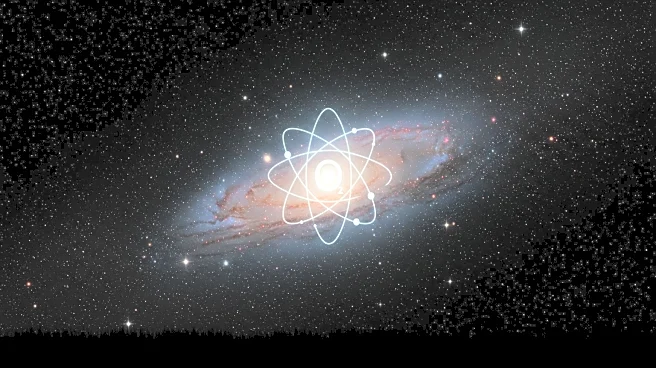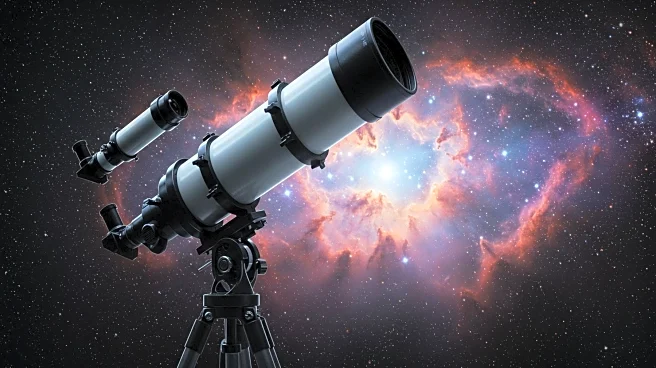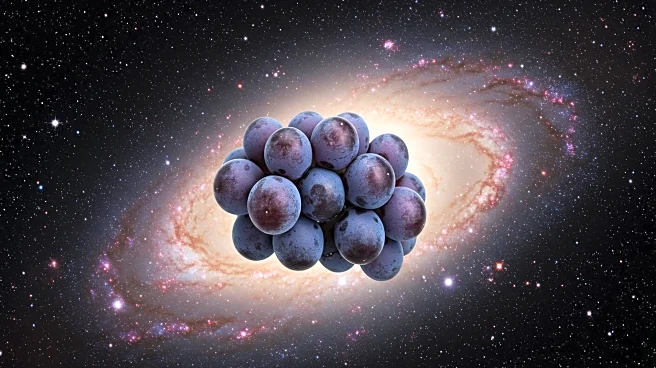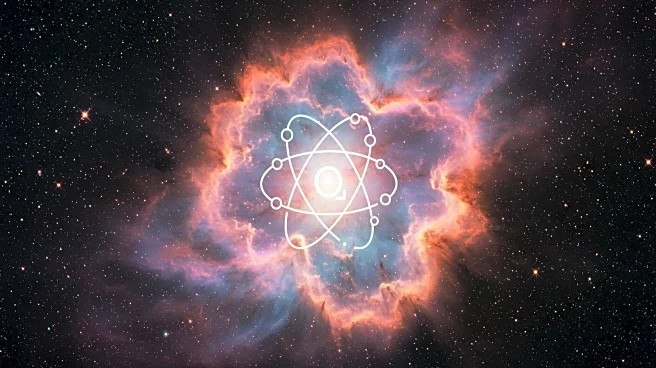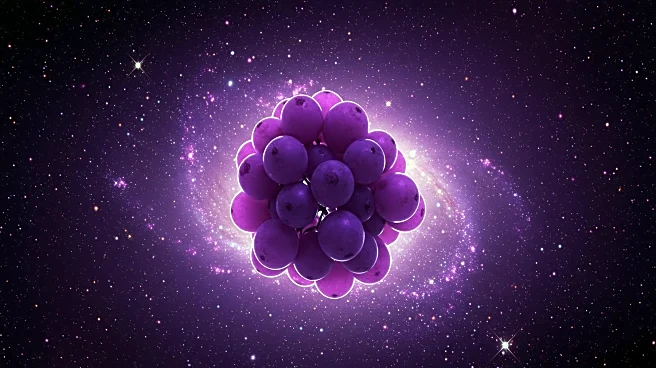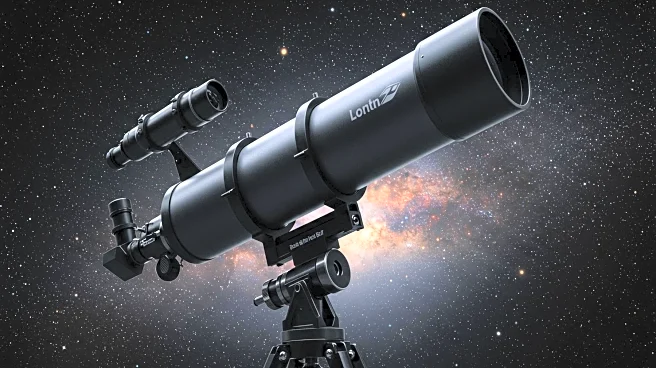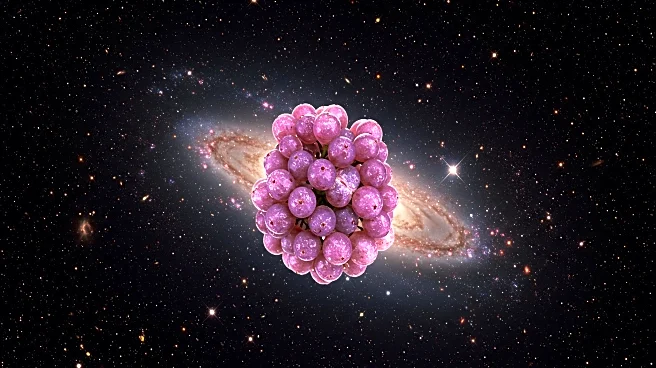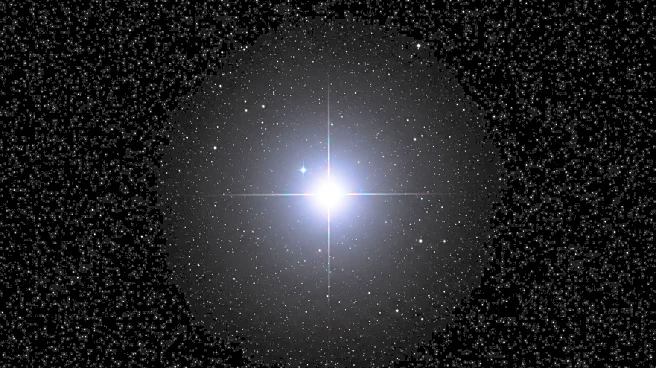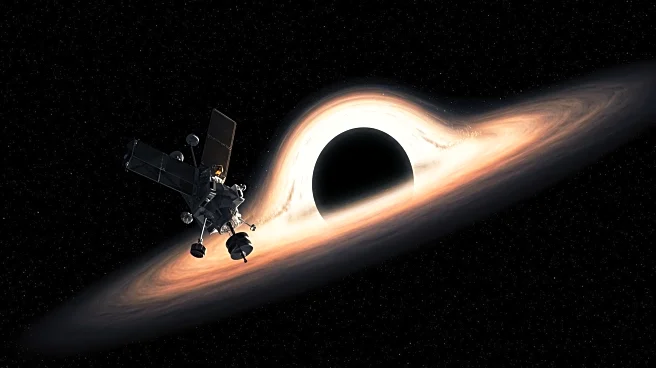What's Happening?
The James Webb Space Telescope has uncovered a puzzling phenomenon in the early universe, known as the 'little red dots.' These tiny, luminous galaxies appear scattered across deep space images, challenging existing theories about galaxy formation. According to researchers Fabio Pacucci and Abraham Loeb from Harvard & Smithsonian's Center for Astrophysics, these objects formed inside rare, slowly spinning dark matter halos. The distinctive red color suggests they are either dust-shrouded or packed with older stars. The source of their brightness remains elusive, as it could stem from either massive black holes or densely packed stars. The study proposes that these galaxies formed in dark matter halos spinning so slowly that they represent less than one percent of all halos in the universe, explaining their rarity and compact nature.
Why It's Important?
This discovery is significant as it provides insights into the formation of galaxies and black holes in the early universe. Understanding the 'little red dots' could help astronomers unravel the processes that led to the creation of the first stars and black holes, which are crucial for shaping the universe. The research suggests that these compact galaxies created ideal conditions for rapid growth, either through star formation or black hole accretion. This could offer a new perspective on the co-evolution of galaxies and black holes, potentially influencing future studies in cosmology and astrophysics.
What's Next?
Astronomers will continue to study these 'little red dots' to further understand their nature and formation. The ongoing research may reveal more about the universe's formative period, providing clues about the conditions that led to the emergence of the first stars and black holes. As the James Webb Space Telescope continues to capture detailed images of the universe, it may uncover additional phenomena that challenge current scientific theories, prompting further investigation and potentially leading to new discoveries in the field of astrophysics.
Beyond the Headlines
The study of the 'little red dots' highlights the role of dark matter halos in galaxy formation, offering a deeper understanding of the universe's invisible scaffolding. This research could lead to advancements in the study of dark matter, a fundamental yet mysterious component of the universe. Additionally, the findings may influence the development of new models for galaxy formation, impacting how scientists interpret cosmic evolution and the distribution of matter in the universe.


